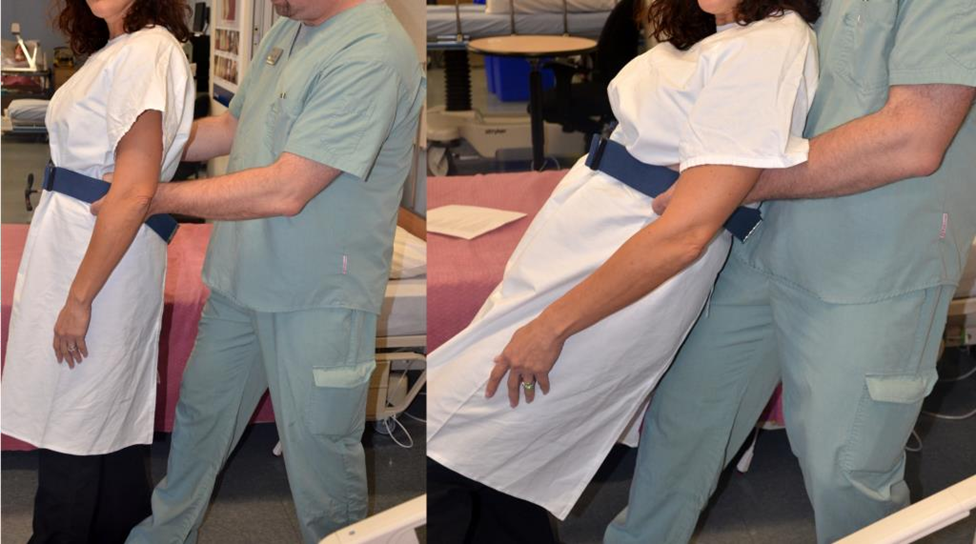A nurse is assisting in performing a mobility assessment on a client. The client can rise from a seated position using a cane for support. The nurse should assign the client which of the following activity levels?
Maximum assist
Minimal assist
Moderate assist
No assist
The Correct Answer is B
A. Maximum assist is when the client requires total assistance from one or more persons to perform the activity. In this scenario, the client is able to rise from a seated position
independently with the assistance of a cane, so maximum assist is not appropriate.
B. Minimal assist is when the client requires some assistance or supervision to perform the activity but is able to complete most of the task independently. Since the client can rise from a seated position using a cane for support, they require minimal assistance.
C. Moderate assist is when the client requires more help than minimal assist but can still contribute to the activity. Since the client can perform the task with minimal assistance, moderate assist is not appropriate.
D. No assist is when the client is able to perform the activity without any assistance.
While the client uses a cane for support, they are still able to rise from a seated position independently, so no assist is not appropriate.
Nursing Test Bank
Naxlex Comprehensive Predictor Exams
Related Questions
Correct Answer is C
Explanation
A. The list of medications is typically included in the Background component of the ISBARR communication tool, as it provides important information about the client's ongoing treatment and medications.
B. Treatment plans and interventions are generally discussed in the Assessment and Recommendation components of the ISBARR communication tool, as they involve the nurse's assessment of the client's condition and the actions recommended for continued care.
C. The Situation component of the ISBARR communication tool focuses on providing a concise summary of the client's current medical condition or status, including relevant changes since the last report or significant events that occurred during the shift.
D. Vital signs may be included as part of the Background or Assessment components of the ISBARR communication tool, depending on their relevance to the client's current condition and any changes observed during the shift.
Correct Answer is B
Explanation
A. Keeping the back bent while lowering the patient is not the most appropriate postion.
B. when a patient begins to fall, it is important to control the descent to minimize injury.
The nurse should widen their stance, bring the patient's body close to provide support, bend their knees, and use the strength of their thighs to lower the patient to the ground safely.

C. Keeping the knees straight while lowering the patient increases the risk of strain or injury to the nurse's back.
D. Holding the patient upright may not be feasible if the patient is already falling, and attempting to do so may result in injury to both the patient and the nurse.
Whether you are a student looking to ace your exams or a practicing nurse seeking to enhance your expertise , our nursing education contents will empower you with the confidence and competence to make a difference in the lives of patients and become a respected leader in the healthcare field.
Visit Naxlex, invest in your future and unlock endless possibilities with our unparalleled nursing education contents today
Report Wrong Answer on the Current Question
Do you disagree with the answer? If yes, what is your expected answer? Explain.
Kindly be descriptive with the issue you are facing.
